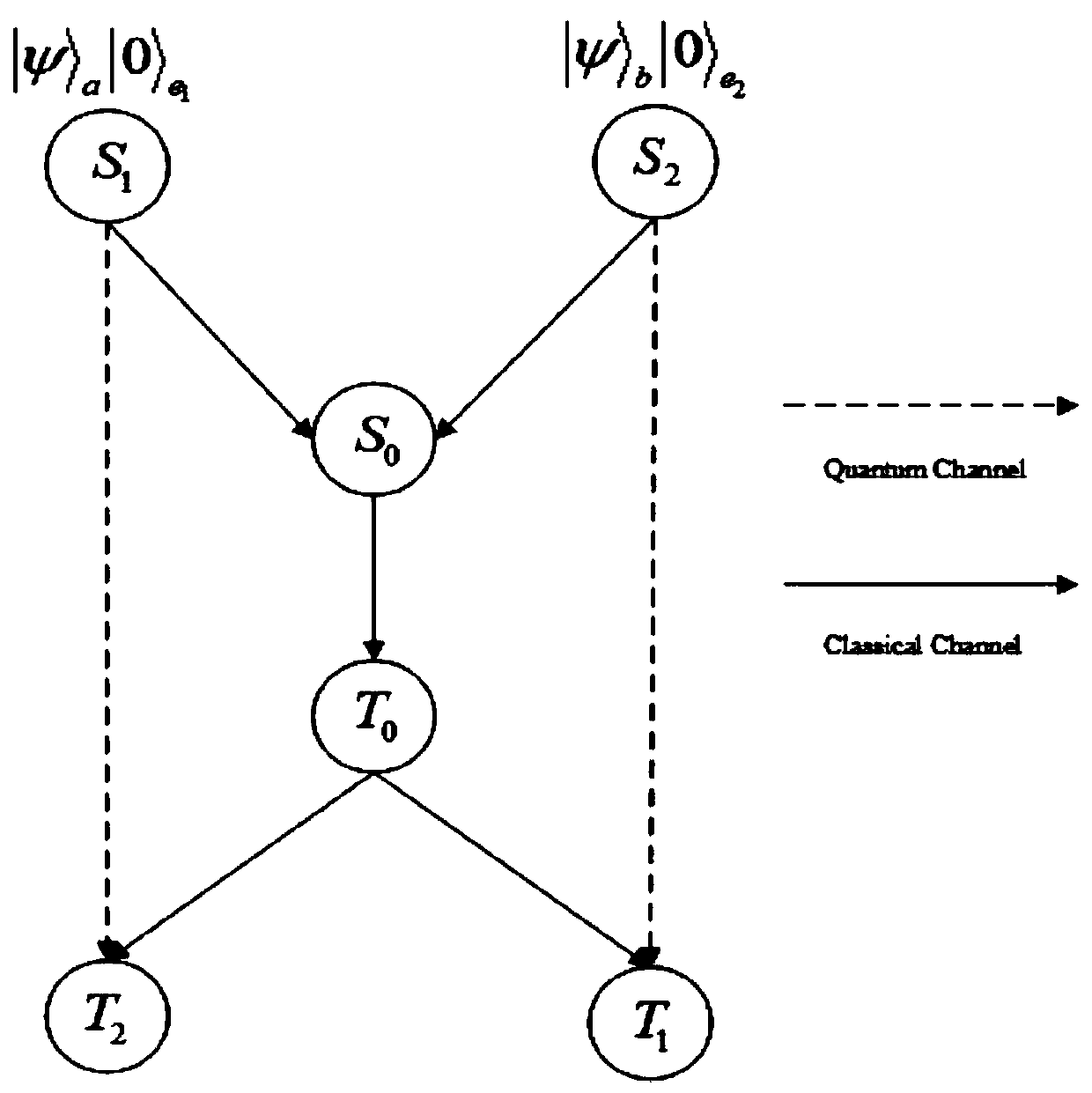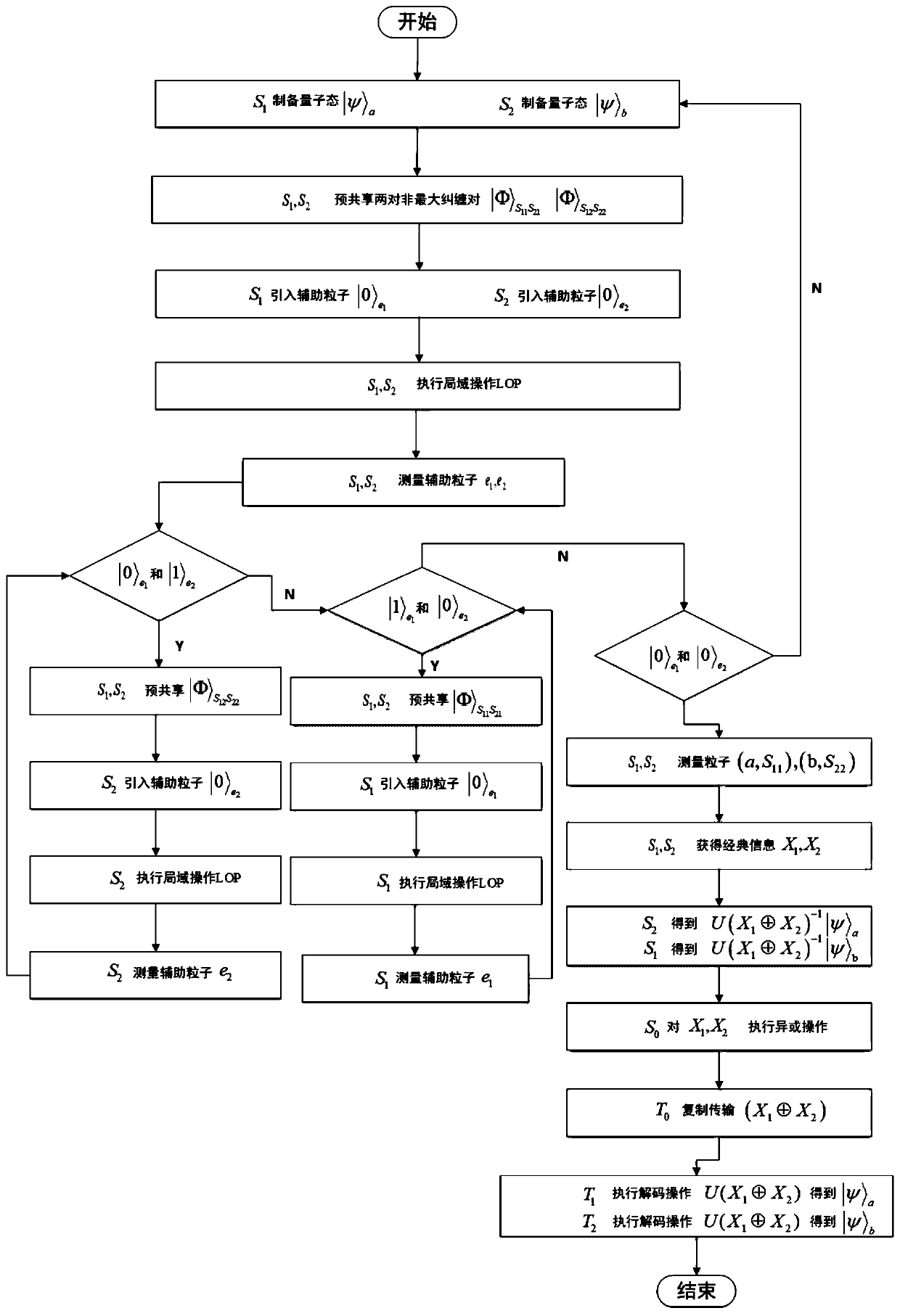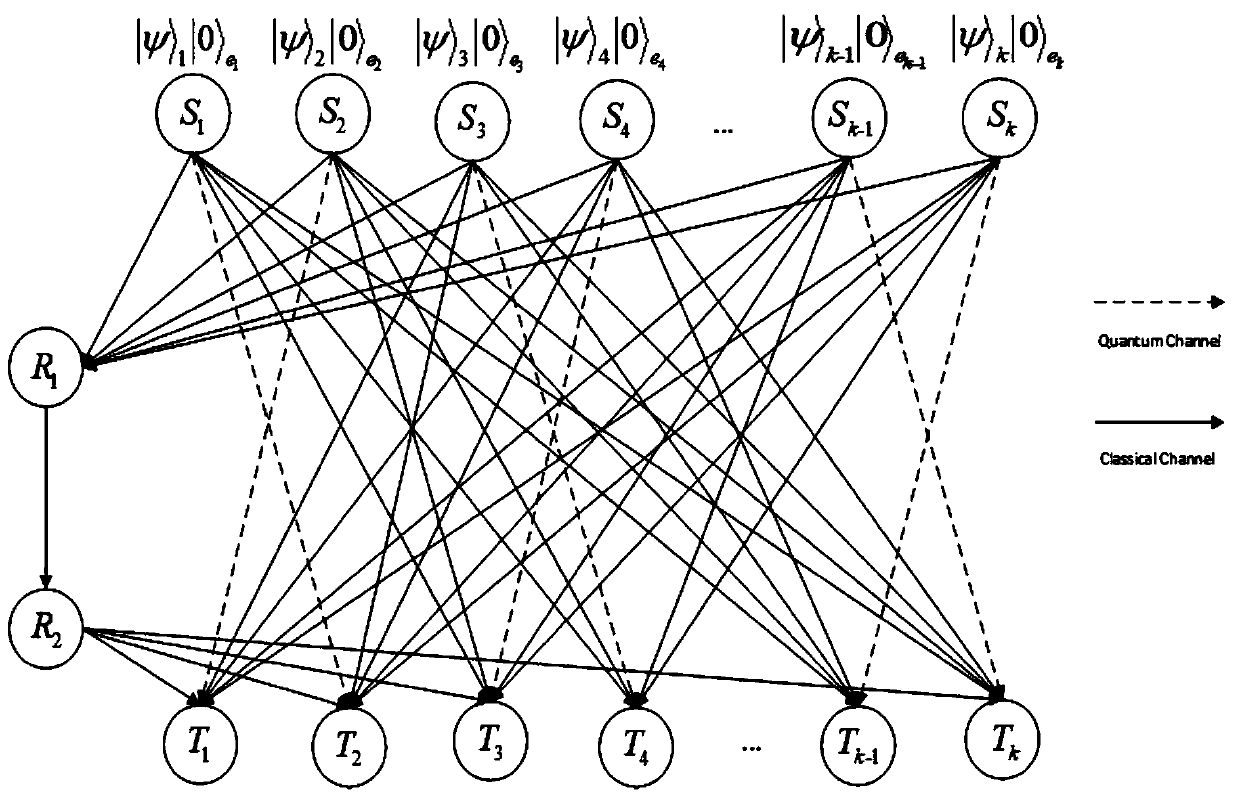Quantum network coding method based on quantum state non-loss
A network coding, quantum state technology used in key distribution
- Summary
- Abstract
- Description
- Claims
- Application Information
AI Technical Summary
Problems solved by technology
Method used
Image
Examples
Embodiment approach 1
[0033] Embodiment 1 A quantum 2-pair network coding technology based on quantum state not being lost
[0034] Step 1: If figure 1 As shown, it is assumed that each sender can prepare two particles in a non-maximally entangled state, and then send one particle in the entangled state to another sender.
[0035] In a butterfly network, two pairs of non-maximally entangled states are pre-shared between two senders, namely and Sender S 1 The quantum state to be sent is |ψ> a , the sender S 2 The quantum state to be sent is |ψ> b .
[0036] In order to realize the quantum network coding scheme without information loss, it is necessary to add an auxiliary particle locally at each sender, the initial state is |0>, and the initial state of the total system is:
[0037]
[0038] Among them, the sender S 1 Possess Particle S 11 , S 12 , the auxiliary particle e 1 , and the quantum state to be transmitted |ψ> a .
[0039] Sender S 2 Possess Particle S 21 , S 22 , the...
Embodiment approach 2
[0069] Embodiment 2 A quantum 3-pair network coding technology based on quantum state not being lost
[0070] Step 1: If Figure 4 As shown, in a 3-pair network, we specify S i to R 1 The lines between are classic channels. R 1 to R 2 The connection of is the classical channel; R 2 to T i The connection between is the classic channel; S 1 to T 2 is the quantum channel; S 1 to T 3 is the classic channel; S 2 to T 1 is the quantum channel; S 2 to T 3 is the quantum channel; S 3 to T 1 is the classic channel; S 3 to T 2 for the classic channel.
[0071] Both the quantum channel and the classical channel are only allowed to be used once for each information transmission, and the capacity of the quantum channel is 1 qubit, and the capacity of the classical channel is 1 bit.
[0072] First, the sender S 1 with S 2 share two pairs of non-maximally entangled states and Sender S 2 with S 3 share a pair of non-maximally entangled states
[0073] After each ...
PUM
 Login to View More
Login to View More Abstract
Description
Claims
Application Information
 Login to View More
Login to View More - R&D
- Intellectual Property
- Life Sciences
- Materials
- Tech Scout
- Unparalleled Data Quality
- Higher Quality Content
- 60% Fewer Hallucinations
Browse by: Latest US Patents, China's latest patents, Technical Efficacy Thesaurus, Application Domain, Technology Topic, Popular Technical Reports.
© 2025 PatSnap. All rights reserved.Legal|Privacy policy|Modern Slavery Act Transparency Statement|Sitemap|About US| Contact US: help@patsnap.com



